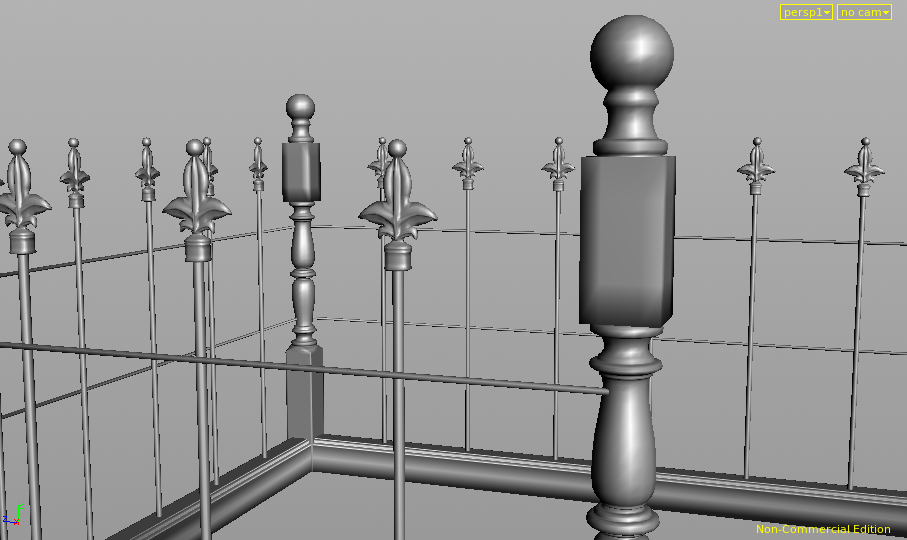
For our research assignment we were told to team up and create a marble machine. This assignment brought quite a lot of trouble on. I split the modeling in half with my team mate, Luisa Reyes - so she modeled two of the props while I modeled three. We modeled in Maya and imported into Houdini in order to do the simulation.
Here are images of the props that I modeled.
The first big problem that we had was simply turning the models into Static objects. We could not figure out how to create the entire group of geometry static, so we ended up having to do it for each object individually. Our second major problem was making the shovel object tilt. In our original plan, we wanted the marble to roll down the ramp, land in the shovel, and the shovel move downwards due to the weight of the ball. We started off with the shovel being an active ridged body, and that seemed to at least make the object move, but we could not get our constraint to work. We tried using a hinge constraint because the model only needed to tilt on the z axis and not anywhere else. Still, no matter how we tried, we could not get the model to move properly on the hinge and eventually, the hinge just stopped creating all together. So our solution to the problem was to just convert the model into a static ridged body and raise the bounciness levels so that the marble could continue flowing into the next prop.
Our final problem ended up in a big headache. Originally, the plans were to have a funnel that had a connecting spiraling ramp so the ball could make it safely to the ground. We had turned this model static, but whenever the simulation was made, the ball would end up being stuck through the geometry of tube connecting the funnel and spiral. We thought that maybe it was a geometry issue, so we sliced up the tube and separated both pieces. That way the ball would surely not get stuck. After importing the new models, we made them static and simulated again. For some reason, the ball still gets stuck in the middle of the ramp geometry. We tried everything that we could think of, but we still could not figure out why this was happening and how to fix it. You can see in the video where the marble stops with the simulation. We plan to as our professor upon turn it for an explanation of why this is happening and how to avoid this issue in the future.
Here is our video of the simulation.














